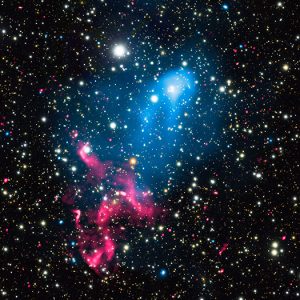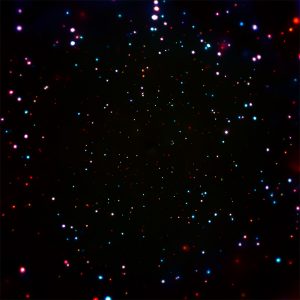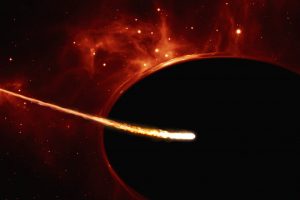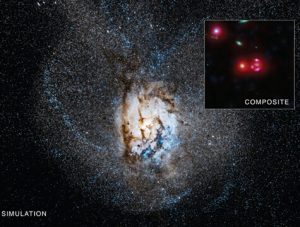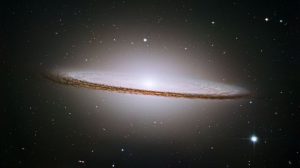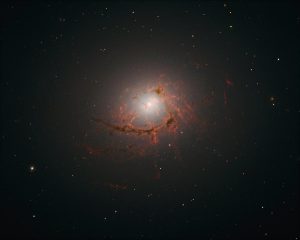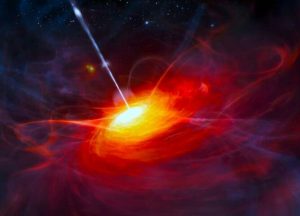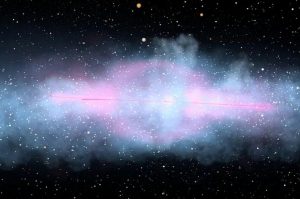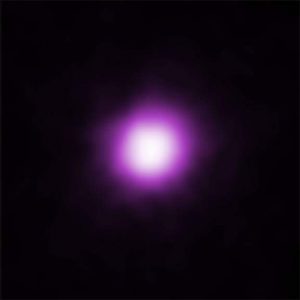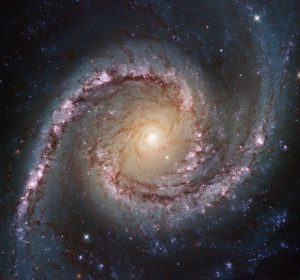buco nero supermassiccio
Un Acceleratore di Particelle Cosmico
Utilizzando dati dell’Osservatorio Chandra e di altri telescopi gli astronomi hanno scoperto in una coppia di ammassi di galassie in collisione chiamati Abell 3411 e Abell 3412 la combinazione di due tra i fenomeni più potenti nell’Universo. I risultati mostrano che un’eruzione prodotta da un buco nero supermassiccio unita alla fusione di enormi ammassi di galassie può creare uno stupendo acceleratore di particelle cosmico. Continua a leggere
Individuato un Tesoro di Buchi Neri
Un’immagine senza precedenti ripresa dall’Osservatorio Chandra della NASA sta fornendo ad un team di astronomi la migliore visione ottenuta finora sulla crescita dei buchi neri nei miliardi di anni subito dopo il Big Bang. Continua a leggere
Un buco nero in rapida rotazione divora una stella
Si riteneva che il lampo luminoso straordinariamente brillante visibile in una galassia remota, chiamato ASASSN-15lh, fosse la più brillante supernova mai osservata. Ma nuove rilevazioni effettuate da vari osservatori, tra cui ESO, hanno messo in dubbio questa classificazione. Un gruppo di astronomi ha ipotizzato che la sorgente sia un evento ancora più estremo e molto raro: un buco nero in rapida rotazione che sta facendo a pezzi una stella imprudente che si è avvicinata troppo. Continua a leggere
Tripudio di stelle in una lontana galassia
Una galassia distante, scoperta recentemente, si illumina del bagliore di una quantità straordinaria di stelle neonate, formandole ad un ritmo forsennato. La prolifica galassia, chiamata SPT 0346-52, si trova a 12,7 miliardi di anni luce dalla Terra ed è stata quindi osservata circa un miliardo di anni dopo il Big Bang. Continua a leggere
La Maestosa Galassia Sombrero
Ecco una delle galassie più imponenti e fotogeniche dell’Universo: la galassia Sombrero, Messier 104 (M104). Segno distintivo della galassia è un nucleo bianco brillante a bulbo circondato da spesse strisce di polvere che percorrono la struttura a spirale. Osservata dalla Terra, la galassia è inclinata quasi di taglio ed è stata chiamata Sombrero per la sua somiglianza con l’ampio cappello messicano. Continua a leggere
Gli straordinari filamenti di NGC 4696
Nuove osservazioni del telescopio Hubble rivelano l’intricata struttura della galassia NGC 4696 con un dettaglio senza precedenti. NGC 4696 è parte dell’Ammasso di galassie del Centauro, uno sciame di centinaia di galassie legate insieme dalla gravità, a circa 150 milioni di anni luce dalla Terra, nella costellazione del Centauro. Continua a leggere
Tinta rossa per i quasar
Le galassie si sono formate e sono cresciute miliardi di anni fa accumulando gas dall’ambiente circostante, o collidendo e fondendosi con altre giovani galassie. Si ritiene che queste fasi precoci dell’assemblamento delle galassie siano state accompagnate da episodi di rapida e intensa formazione stellare, noti come starbust, e rapida crescita di un buco nero supermassiccio nei centri galattici. Continua a leggere
Voraci Buchi Neri Rallentano la Formazione delle Stelle
Un nuovo studio di un gruppo internazionale di astrofisici, guidato da K. Dasyra della National and Kapodistrian University of Athens, suggerisce che i getti di particelle cariche dai buchi neri possano influenzare la formazione stellare nelle galassie, sia disperdendo che riscaldando grandi quantità di gas su vasta scala. Il risultato si basa su osservazioni della galassia IC5063, ottenute con ALMA dell’ESO. Continua a leggere
Niente cibo per il buco nero di Markarian 1018
Gli astronomi hanno risolto il mistero del comportamento imprevedibile di un buco nero supermassiccio al centro di una galassia. I dati combinati dell’osservatorio Chandra e di altri telescopi suggeriscono che il buco nero stia attraversando tempi difficili e non abbia più il carburante necessario per illuminare i suoi dintorni. Continua a leggere
Vortici Maestosi da Hubble
Questa immagine mozzafiato ripresa dal telescopio Hubble mostra NGC 1566, una splendida galassia situata a circa 40 milioni di anni luce di distanza nella costellazione del Dorado. NGC 1566 è una galassia a spirale intermedia: anche se non ha una regione di stelle ben definita a forma di barra al suo centro, come le spirali barrate, non è nemmeno una spirale non barrata. Continua a leggere
